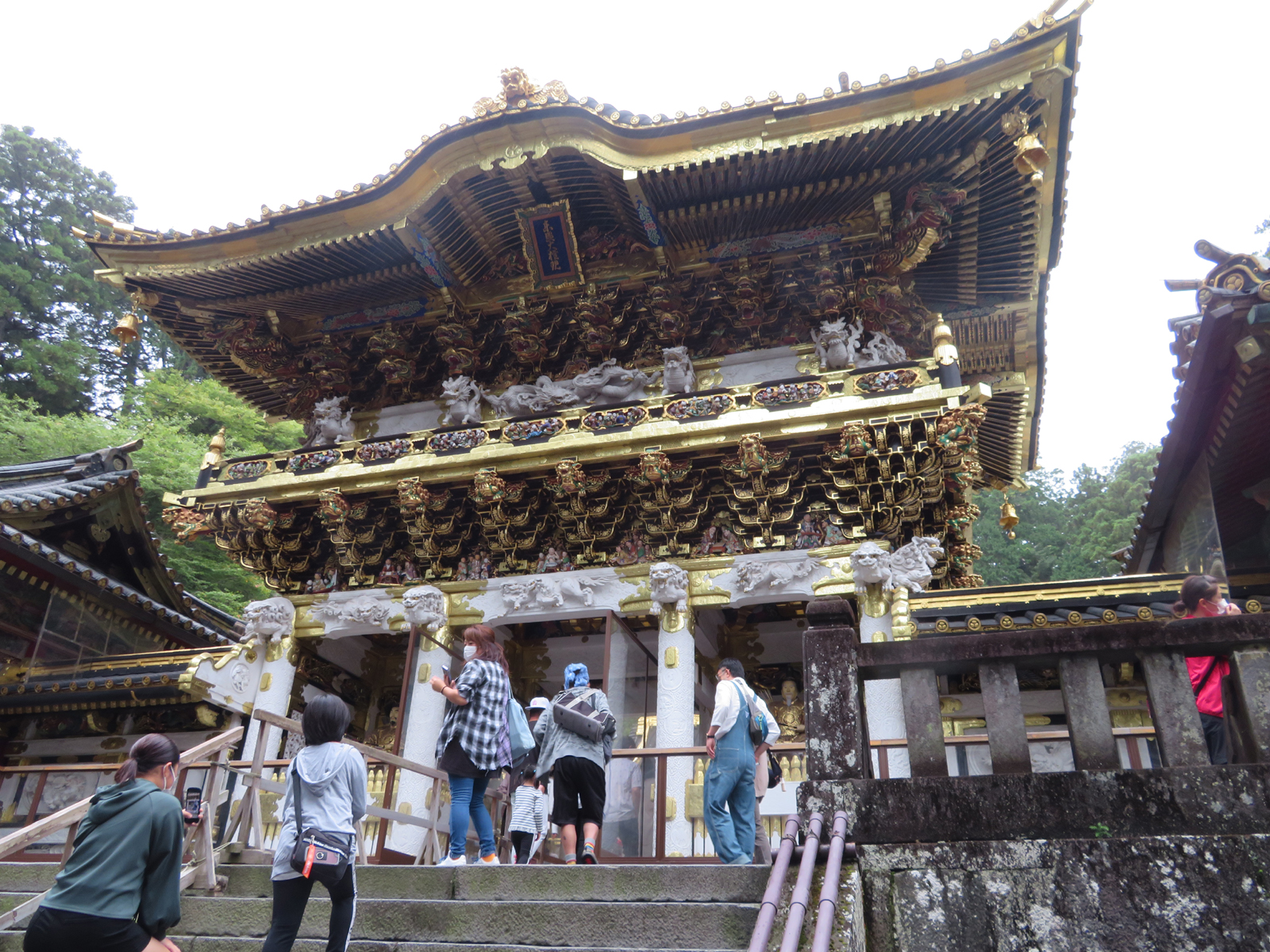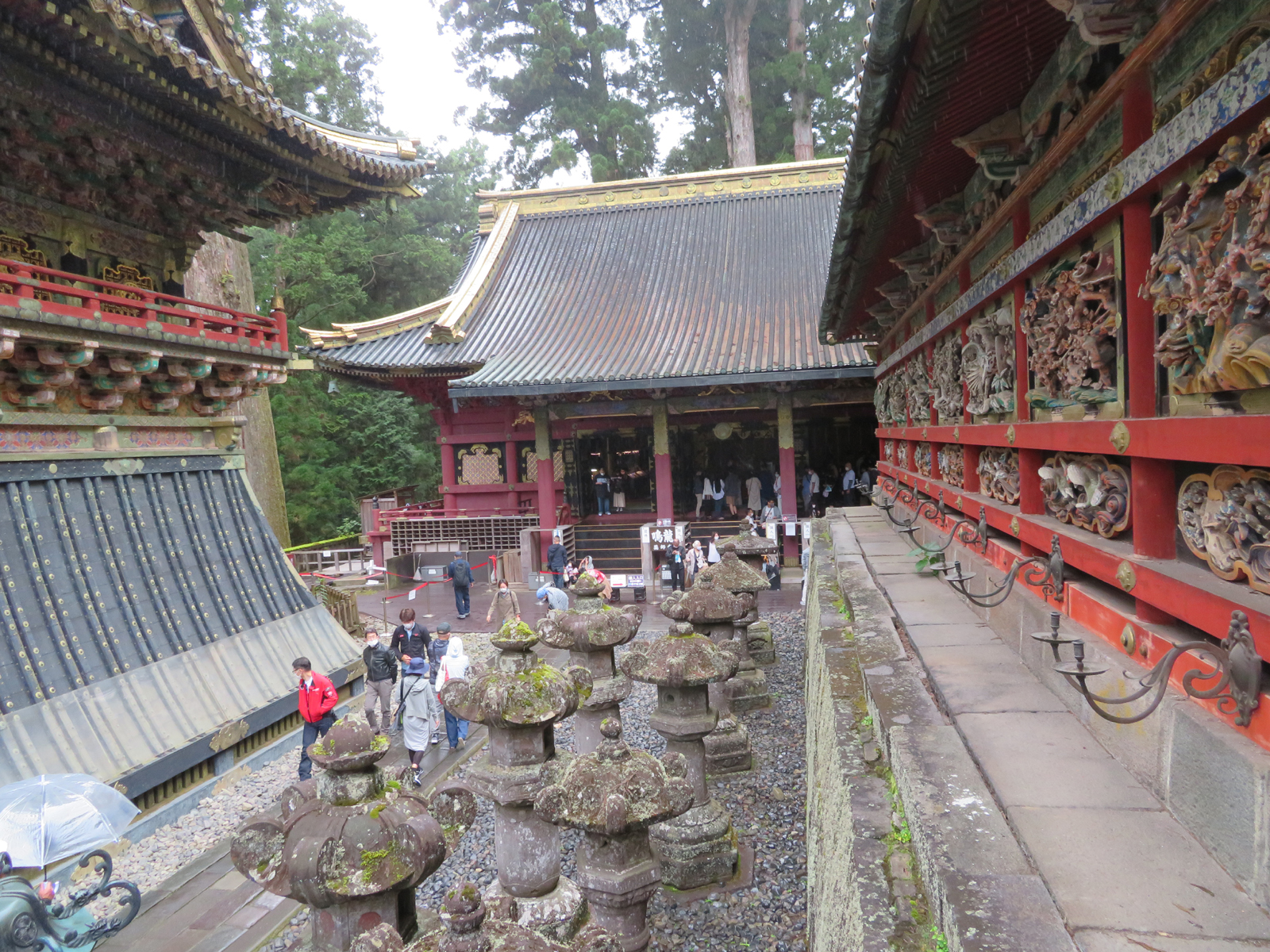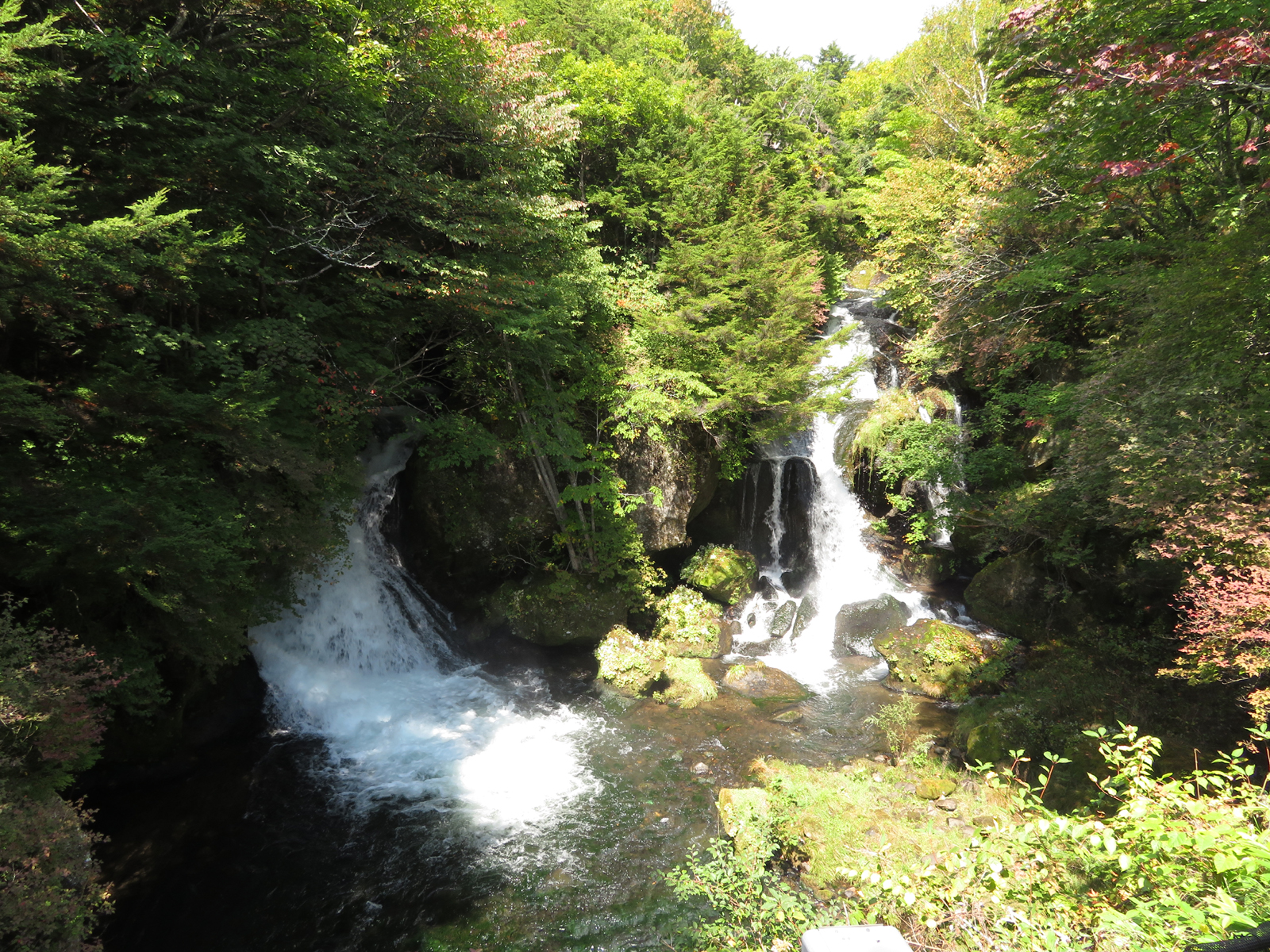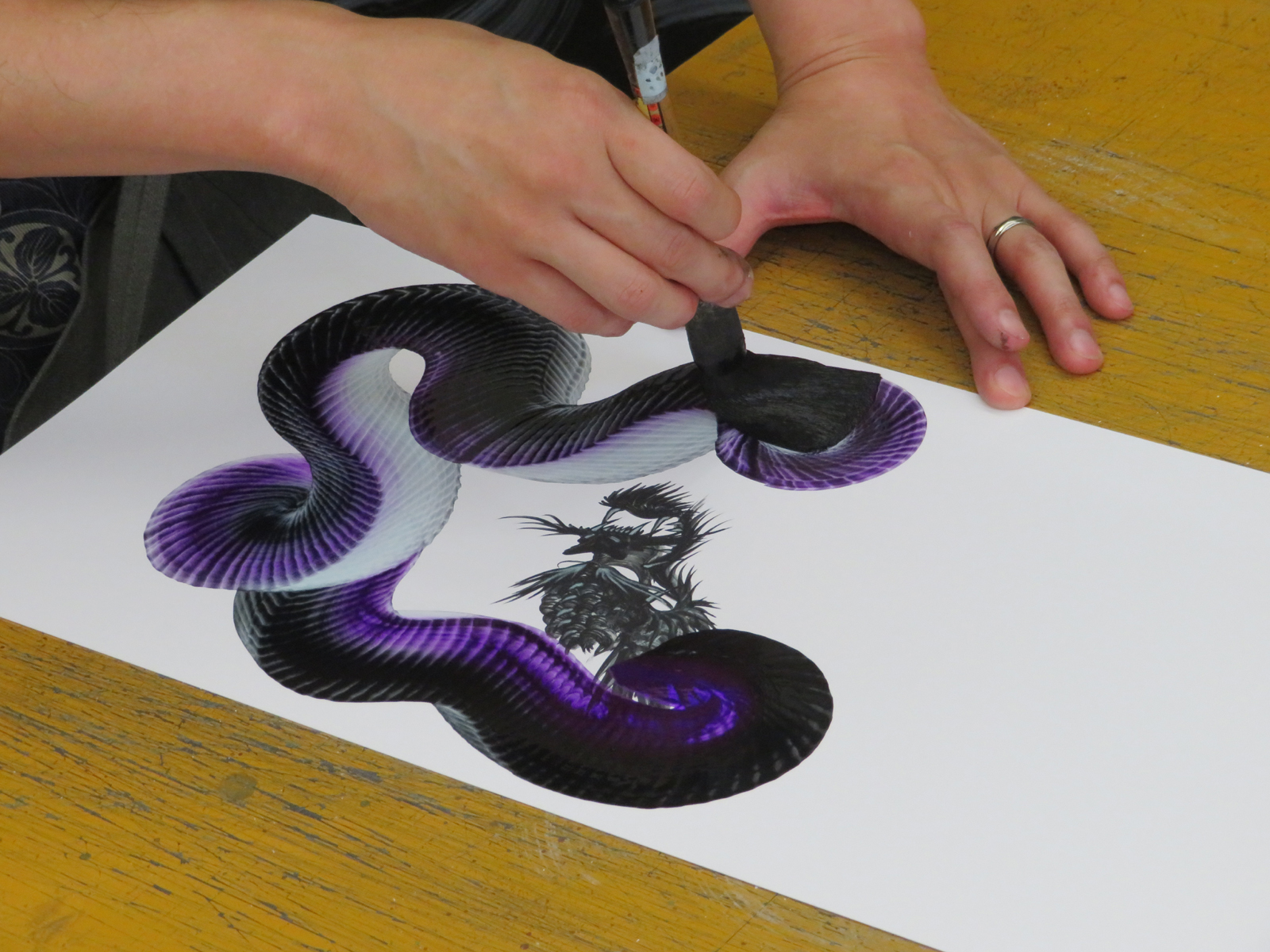Dragon hunting may not be the first thing one thinks of when thinking of a visit to Nikko in Tochigi Prefecture, but in fact, the hunting there is excellent and anyone can do it. It’s a great way to further enhance the delightful sightseeing of this stunning area.
Dragons are mythical beasts that, curiously, are found in the myths and legends of many societies around the world. In Asia they are regarded positively, able to bring life-giving rain and carry one’s wishes to the gods. They are often associated with water, a plentiful element in the mountains of Nikko.
World Heritage Dragons
The most famous sites in Nikko are the World Heritage-listed shrines and temples, which are full of amazing examples of the best of seventeenth century Japanese art. Altogether there are 103 structures in the listing, and innumerable dragons, if you know where to look.
The first dragon you might encounter is, predictably, found near water. A beautiful bronze dragon winds around and over a vat near the lowest entrance to Rinno-ji, a 1,200-year-old Buddhist temple that has long been a center for Buddhist asceticism. Water spouts into the vat from the dragon’s mouth.

Further up the mountain, above Rinno-ji, Toshogu is a lavish Shinto shrine complex dedicated to Tokugawa Ieyasu (1543-1616), founder of the dynasty of shoguns that ruled Japan from 1603 to 1868. Ieyasu’s mausoleum is high on the mountainside inside the shrine grounds; he is regarded as the primary deity worshipped at the shrine.
Challenge yourself to count how many dragons adorn Yomeimon, the resplendent gate leading to Toshogu’s central courtyard. On the white gate, with its black cantilevered eaves intricately trimmed in gold, carved dragons look down on you as you pass through. Look above you for colorful dragons painted on the ceiling. There are a number of dragon medallions carved into the pillars of the structure as well.

Directly across the courtyard, hunt out more dragons on the pillars of the closed gateway leading to the main shrine building. The dragon on the left pillar is ascending, carrying prayers and wishes to the gods, while the one on the right is descending, bringing back good fortune.
The main shrine building, accessed via a side entrance, has long white dragons as the frieze beams of its veranda. Inside, detailed dragon images on gilt background are on each of the square ceiling panels of the outer chamber.
Continue your dragon quest with a visit to Yakushido, to the right as you descend from Yomeimon. Yakushido is a Buddhist temple, technically part of Rinno-ji, in spite of the fact that it sits inside the precincts of Toshogu (remember, until the late 19th century, Shinto and Budddhism operated as a single, syncretized religion).

Yakushido is also known as the temple of the singing dragon because of a curious acoustical phenomenon inside. Shedding shoes outside, visitors are gathered in an outer chamber where a priest explains the protocol: silence, no photos, hold your hands in the gassho prayer position, etc. The group then passes into the temple’s main hall, where 12 statues of Yakushi Nyorai, the Medicine Buddha, flank a dark altar.
After the priest explains that visitors can offer prayers for good health at the Yakushi statue associated with their Chinese zodiac symbol, he goes on to explain the sumie ink drawing of a dragon on the ceiling. A dragon amid clouds is a common feature of temple ceilings as it is believed the dragon causes the clouds to rain enlightenment onto those below. In this temple, however, the dragon has one other “trick” to offer.
The priest takes two wooden clappers and explains how if he claps them together while standing immediately below the dragon’s face, the sound bounces between floor and ceiling: the dragon sings. He demonstrates that the phenomenon only occurs if the sound is created on that one spot in the room by clapping his clappers while standing in other spots around the room. He stands again under the dragon’s face, and the dragon sings again.
Among the dragon souvenirs visitors can acquire at Yakushido are dragon incense sticks, dragon ema (votive plaques) and temple inscription books embossed with a golden dragon. Good hunting indeed.
Ryuzu Falls: the head of the dragon
Farther into the mountains of Nikko, above Lake Chuzenji (take the bus bound for Yumoto Onsen), is one of the most powerful dragons of this area: Ryuzu Falls, a 210-meter stretch of cascading white water. Ryuzu means “dragon’s head”. The name derives from the pair of falls at the bottom of the cascade, in which many people see the snout and jaw of a dragon’s head. The energy of the tumbling water is always fun to observe, but from late September to late October the deepening color of the autumn leaves on the trees overhanging the cascade are a particularly popular sight.

There is a bus stop at the top of the cascade that will take you back to Lake Chuzenji or Nikko but the intrepid may choose to continue on the hiking trail alongside the clear waters of the river, over a boardwalk through a scenic marshland, and on up to Yutaki Waterfall, where water tumbles 70 meters over a steep slope of volcanic rock just below Lake Yumoto. The imaginative may decide that if the lower cascade represents the dragon’s head, these falls are the tip of the dragon’s tail. The entire walk takes almost two hours and there is a bus stop just 10 minutes from Yutaki Waterfall.
Dragon Art
Maybe you’d like a dragon “trophy” to commemorate your hunt. How about a colorful drawing of a hito-fude ryu (one stroke dragon)?
At Kousyyuya, you can choose ready-made dragon drawings, framed or unframed, in three sizes and several colors. But if you don’t mind waiting 20-30 minutes, your dragon can be custom-drawn to your order right before your eyes. Fundamentally self-taught in this style of drawing, Abe-san uses small, fine-tipped brushes to initially create the details of the dragon’s face. Then he takes up a wider brush and, after carefully applying different colored paints across the width of the brush, commences to draw the dragon’s body in a single stroke. It is a long and complicated stroke, often full of twists and turns and even a curious jerking motion that creates a scale-like effect. It is mesmerizing to watch, and one cannot help but admire Abe-san’s skill with his brushes.

Kousyyuya is on the right-hand side of Nikko Kaido about two-thirds of the way from the station to Shinkyo (the sacred bridge). It is open 10:00 to 18:00 Friday through Wednesday.
It goes without saying that as popular as dragons are, these are not the only ones hunters will find in Nikko. But they may be the most fun ones. Enjoy finding them, and others, when you get the chance to visit.
Vicki L Beyer, a regular Japan Today contributor, is a freelance travel writer who also blogs about experiencing Japan. Follow her blog at jigsaw-japan.com.
© Japan Today Take our user survey and make your voice heard.
Take our user survey and make your voice heard.















No Comment
Login to comment